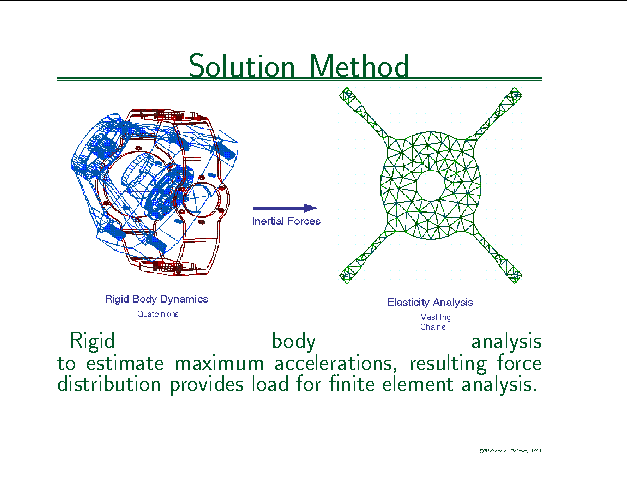
In the case of this assembly, deformation will be due to inertial effects. For this reason, a two step analysis is proposed.
First a rigid body analysis is performed to estimate the maximum accelerations that the spider will be subjected to in operations.
Second, these accelerations are used to determine nodal loads for a finite element elasticity analysis, and the FEM method is used to solve for displacements, and the displacements are compared with the tolerances.
So given that we're going to use this general scheme for predicting the behavior of the spider, consider the steps we go through to create an executable code. A code that can answer the designer's question.
We have not yet completed this analysis. This is because solving this problem will require the generation of a three dimensional mesh to discretize the spider for the finite element analysis. Generating guaranteed quality three dimensional meshes is a current research topic, and a member of our group, Paul Chew, is one a leading researcher the area.
On the other hand, we have taken several steps towards addressing this analysis, and I'll describe what we've done, and what remains to be done.
But before that, let's take a step back and look at the problem of creating analyses from a more abstract perspective. We will then be able to see the analysis at hand as an instance of a general pattern, and how the tools we're developing fit into the pattern.